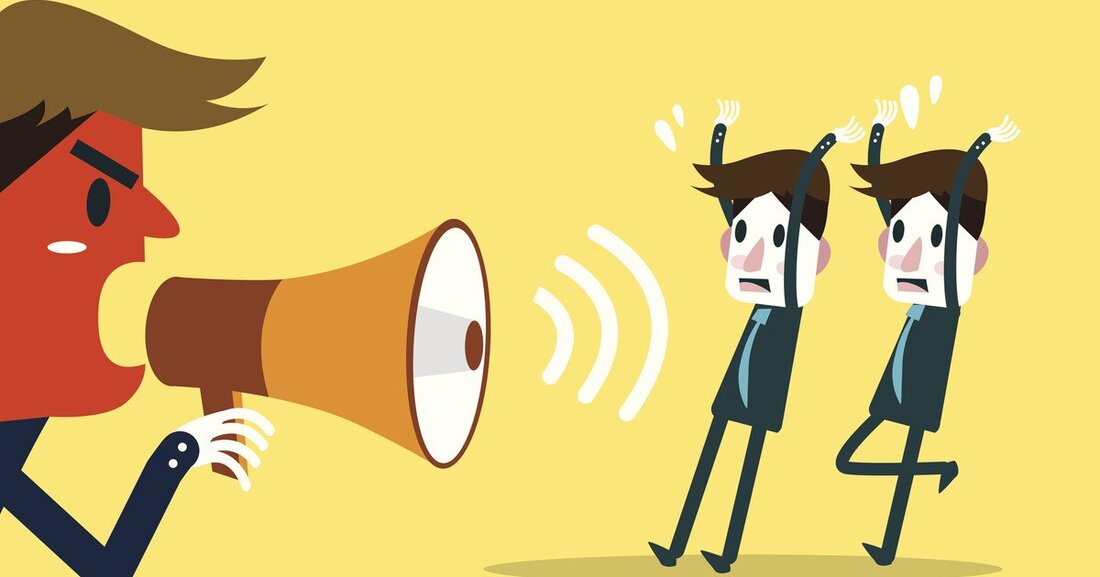5 rules for critical discussions
Where there is planing, there are shavings. Of course, superiors have to point out errors. But it's not that easy. The automotive industry provides useful practical tips.

5 rules for critical discussions
There are always occasions for criticism in the work environment: being late in the morning, working too slowly or not following instructions, to name just a few typical examples from practice. Criticizing employees is not pleasant for their superiors because you could get upset and choose the wrong words. Accepting criticism is often not easy for those affected because it could make them feel hurt.
forms of criticism
“Destructive criticism” makes employees aware of their performance deficits and then leaves them “out in the cold”. A mistake is usually reported while still in a state of excitement, accusations are made and sanctions are mentioned.
In contrast to this is “constructive criticism”, where the superior clarifies the cause of the error and says what needs to be done so that it doesn’t happen again. Anyone who criticizes constructively follows the rules of the game and does not hurt the employee's all-important self-esteem. Those who are criticized experience their own mistakes differently: Some people don't even notice a mistake, others correct it on their own or ask colleagues for help, while others recognize the wrongdoing but don't take the matter too seriously and just wait and see. Of course, as a supervisor, you don't find out about every mistake employees make: the estimated number of unreported cases is around 30 percent.
The most important rules
In any case, superiors are well advised to adhere to certain rules when it comes to criticism. The motor vehicle industry has summarized the five most important rules below:
Rule 1: Participate in the conversation
If those criticized have the opportunity to comment, they are actively involved in the conversation. Questions are suitable for this: “Why didn’t you come on time?”, “Why couldn’t you keep the appointment?” A statement like “You have to go faster, now get involved!” is not effective. However, the master must also expect excuses or that the blame will be shifted to other people or circumstances. Some excuses serve to protect the person concerned. By the way: For every critical discussion, a clear statement of facts is necessary.
Rule 2: Never get personal
In any case, the criticism may only relate to the specific error and the performance deficit, but not to the person who made the respective error. A phrase like “I’m disappointed in you” can be meant objectively, but it sounds very personal to employees and they will immediately defend themselves. Some people are completely unaware of the impact of their mistake, while others are even extremely embarrassed. Providing constructive criticism therefore requires empathy, called a “change of perspective”.
In anger, the superior accidentally says in a loud voice: "Man oh man, you're slow today, you're not making any progress at all." A factual assessment sounds different: “But this work took a relatively long time.” The so-called conditional technique has also proven itself. The prerequisite is stated under which the work can be done faster: “If you do it this way and that, it will go faster.” The employee does not feel personally criticized, but rather, on the contrary, constructively corrected and enabled to complete work more efficiently.
Rule 3: Consider the performance limit
New or younger employees naturally do not have the same routine as someone with experience. Most errors can be avoided through thorough instruction and systematic controls. When dividing work, attention must also be paid to the workload limits of the workforce. If you're overwhelmed, you don't always do everything right. Criticism is related to the level of difficulty of the task and the performance of the individual. Therefore, each case must be assessed individually; when comparing performance, superiors must not base their performance on the performance level of the “Employee of the Month” - this is not the benchmark for average performance.
Rule 4: Only criticize in private
Criticizing someone in front of others shows poor leadership style and is harmful to the working atmosphere. Criticism in front of others is a violation of leadership principles. Even after the criticism discussion, others should not find out about it unnecessarily. If customers complain about a work error, it goes without saying that superiors do not denounce employees. Employee errors are only discussed internally.
Rule 5: Discuss positive consequences
One should address not only the disadvantages that result from making a mistake, but also the benefits that arise from avoiding the mistake. Most of the time you only explain the negative consequences to employees, present the worst case scenario and paint the devil on the wall instead of making the positive consequences clear. It is more effective to provide information about the best case: “If you follow the instructions exactly, you will be finished faster”. The critical discussion is an opportunity for further development and prevents customer complaints. If you give recognition for particularly good performance, the employee will also be able to understand a mistake in a later criticism discussion. Only those who can praise can also criticize.

 Suche
Suche
 Mein Konto
Mein Konto